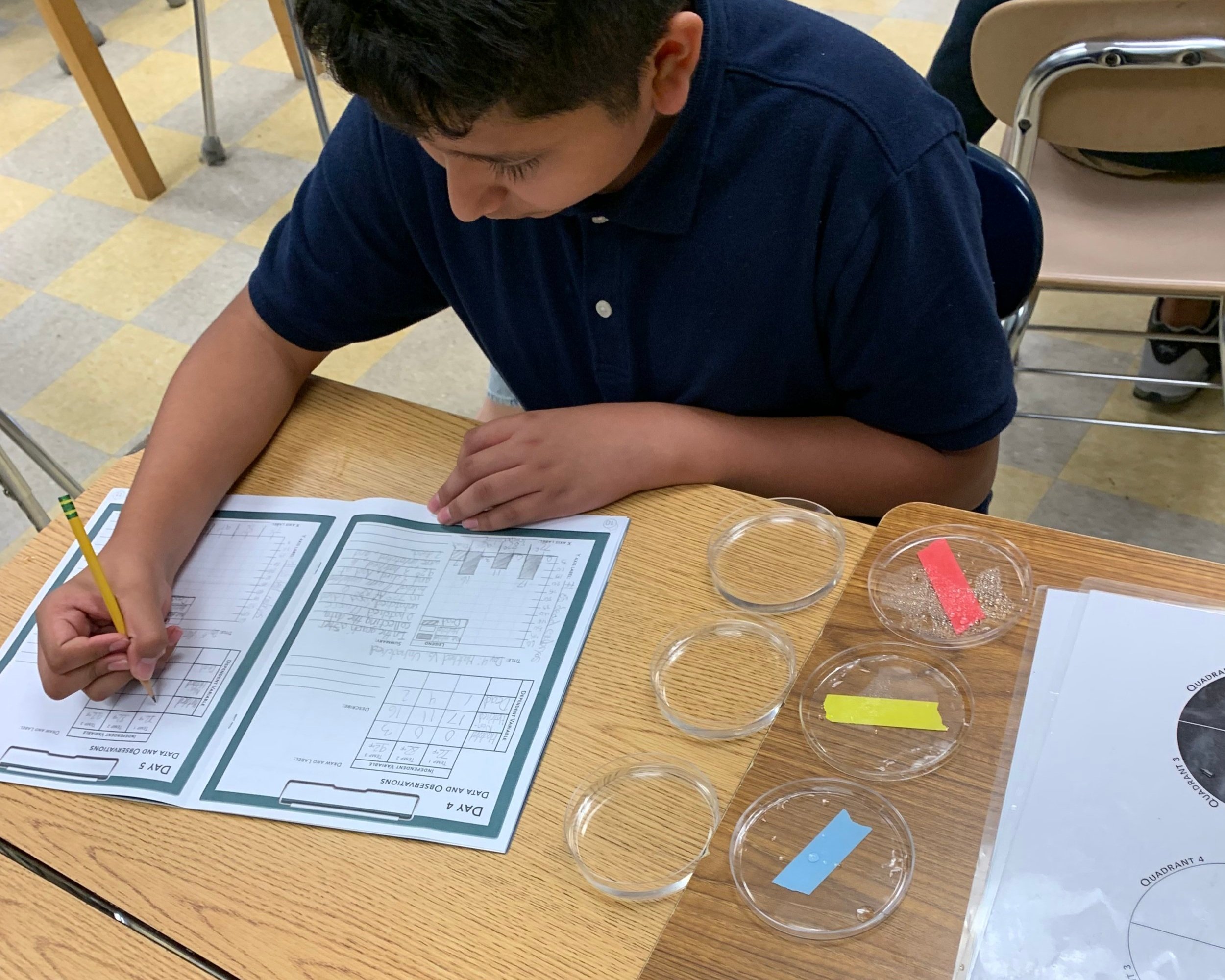
Fish Dynamics
Fish Dynamics is a hands-on biology unit for 7th grade through high school that explores the structure of experimental design over five class periods using live zebrafish embryos, providing students with lots of chances to practice their observational and graphing skills. It is designed to follow up a week of Project BioEYES.
Designing an Experiment
Students are introduced to a hypothetical situation where scientists have noticed zebrafish embryos developing at different rates, possibly due to varying temperatures. They discuss different types of equipment (e.g., Petri dishes, infrared thermometers, heating pads, and thermostats), explore the function of each, and determine how each piece of equipment could be used in an experiment testing the effect of temperature on zebrafish embryo development. The class designs this experiment together, creating three hypotheses for each of three temperatures, identifying dependent variables related to development that can be measured, and creating a protocol to set up and collect data generated by the experiment. This strategy gives ownership of the experiment to the students, while also engaging them through hands-on inquiry with equipment. It combines their knowledge about living organisms with experimental manipulation.
Testing Hypotheses
Zebrafish embryos will be provided to student groups. They will place embryos in Petri dishes for each experimental temperature, and take a time-zero data point. For the rest of the week, the students will use microscopes to make observations of their embryos and record the data in their journals. Each day the students construct a bar graph to represent the data they have collected.
Reaching a Conclusion
The students collect their final set of data and finish their observations on the last day of the program. They then construct line graphs to represent their week's worth of data and analyze their results. Students are asked to summarize their results, validate or invalidate their original hypotheses, and provide evidence for their conclusions. They discuss what confounding factors there may have been, how the experiment could be changed or improved, and what other variables could be tested in the future.
